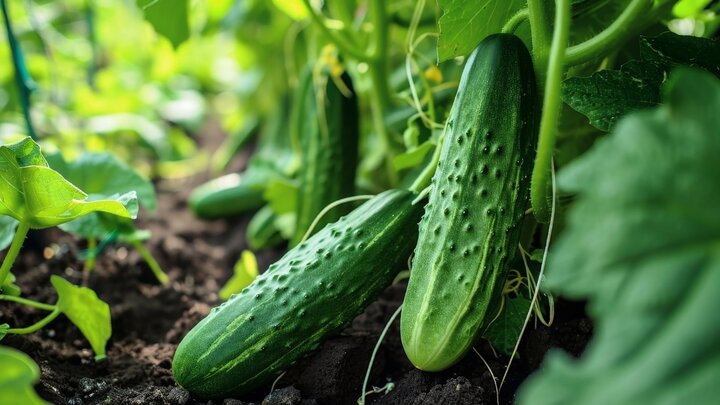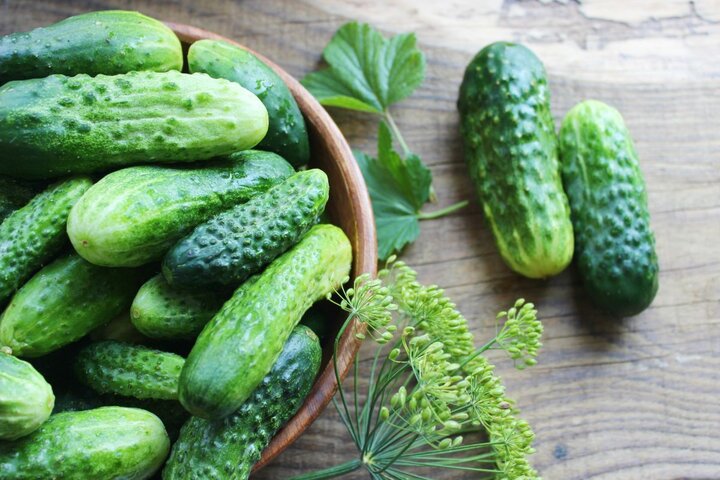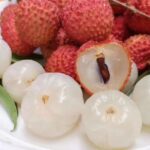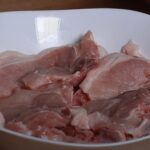Cucumbers are packed with vitamins and natural minerals, a nutritional profile not commonly found in other foods. Beyond their nutritional benefits, cucumbers offer a host of other advantages, including cancer prevention, blood pressure regulation, oral health, digestive health, and the treatment of common ailments.
In the culinary world, cucumbers are a staple in healthy dishes such as Vietnamese herb salads and are often consumed directly with main courses to counteract richness.
Tip for selecting cucumbers with solid flesh that aren’t bitter

Tip for choosing cucumbers with solid flesh that aren’t bitter. (Image: Botanical Interests)
You can select delicious cucumbers with solid flesh and no bitterness by considering the following factors:
Color
The color of cucumbers can provide valuable insights into their quality. Fresh, delicious cucumbers typically sport a vibrant, uniform green hue, devoid of yellowing or black spots. If you spot any yellow patches, black spots, or a yellowing stem, it’s likely that the cucumber is aging, becoming spongy, and may taste bitter.
Cucumbers with an overly deep green color may have been overexposed to sunlight and are more likely to be bitter. Opt for cucumbers with a bright, light green color.
Shape and Size
Cucumbers that are tasty and have solid flesh generally assume an elongated shape and a moderate size, neither too big nor too small. Overly large cucumbers tend to have more seeds, hollow centers, and a spongy, bitter taste when consumed.
Choose cucumbers of medium size, approximately 10-15 cm in length. The ends of the cucumber should not be disproportionately enlarged; instead, opt for cucumbers that taper evenly from end to end. This indicates a cucumber with solid flesh, fewer seeds, and a sweeter taste.
Testing for Firmness
To select cucumbers with solid flesh that aren’t bitter, gently squeeze them to assess their firmness. Fresh cucumbers typically have taut skin and a moderate firmness, neither too soft nor too hard. Overly soft cucumbers may be wilted or on the verge of spoilage, while extremely hard cucumbers could be unripe.
Additionally, inspect the cucumber’s surface for any indentations. Cucumbers with indentations may have been damaged during transportation, which can compromise their quality.
Examining the Skin

Cucumbers with tiny spines are usually fresher, with solid flesh, and taste crisp and sweet. (Image: Gardening)
The skin of a cucumber is another crucial indicator of its freshness and quality. Delicious cucumbers typically have smooth, blemish-free skin, free from scratches or dents. Cucumbers with wrinkled, scratched, or dented skin are likely wilted, overripe, or have endured rough handling during transportation.
Pay attention to cucumbers with tiny spines on their surface. Fresh and young cucumbers often have more spines, indicating solid flesh and a sweeter taste. Avoid cucumbers with smooth, waxy skin, as they may have been treated with preservatives or coated in wax to prolong their shelf life.
Observing the Stem
The stem of a cucumber is another indicator of its freshness. Fresh cucumbers typically have green, sturdy stems that show no signs of wilting. If the stem appears dry or wilted, it’s likely that the cucumber was harvested a while ago and may not be as fresh.
Additionally, if the stem is loose or unstable, it could indicate that the cucumber is overripe, prone to sponginess, and lacking crispness. Therefore, when buying cucumbers, pay attention to the stem to ensure their quality.
Seasonal Purchasing
Cucumbers are easy to cultivate and are available year-round. However, they taste best during their peak season, typically in summer and autumn, when they are at their sweetest and crispest, with minimal bitterness.
Purchasing cucumbers off-season may result in a higher likelihood of bitterness and inferior quality due to the use of preservatives and growth stimulants.
Dealing with Bitter Cucumbers
If you happen to purchase bitter cucumbers, you can employ a few tricks to reduce their bitterness. Firstly, peel off the outer layer, as it often contains bitter compounds. Then, cut off the cucumber’s stem and use it to rub the remaining part in a circular motion. This process causes the release of a white substance that helps reduce bitterness.
Soaking cucumbers in a dilute salt solution is another effective method to eliminate bitterness. Soak them for about 15-20 minutes, then rinse them with clean water before use.
According to VTC News
Unlock the Secret to Keeping Bananas Fresh for Up to 10 Days: No More Bruising and Discoloration
Bananas are a delicate fruit that is highly perishable at room temperature and prone to rapid ripening and spoilage. The challenge with bananas is finding the right storage conditions to prolong their freshness. While refrigeration can help extend their shelf life, it often results in unsightly dark bruises on the fruit’s bright yellow skin.






































